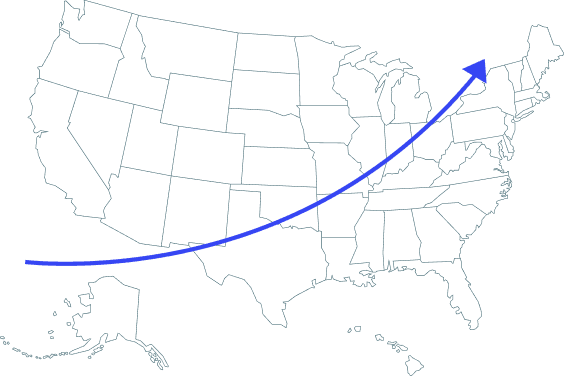7. Expert Forecasts
While we can’t predict policy with certainty, trade consultants, logistics experts, and industry analysts have been weighing in on what to expect in the coming months and years. Watch out for these:
Enforcement Will Be Strict and Could Expand Further
U.S. authorities are unlikely to reverse the crackdown on de minimis anytime soon. In fact, a climate of diligent enforcement and zero tolerance for non-compliance is emerging. CBP is ramping up capacity with more agents and automated scanners while leveraging advanced data analytics to flag risky shipments.

Any attempt to cheat the system with false values or mislabeled goods could lead to aggressive penalties including criminal charges or bans. New regulations already require more detailed electronic data for all parcels, even postal shipments, which also strengthens the enforcement of forced labor laws (UFLPA). This indicates the screws are tightening on import compliance, and businesses should invest accordingly in good customs data management and legal compliance reviews.
Massive Reduction in Small-Parcel Import Volume
Industry analysis suggests that annual de minimis package volumes to the U.S. could decline by as much as 75% once the new global rule takes effect, dropping from 800-900 million annual parcels to 200-300 million post-321.41 This sharp decrease reflects a shift away from low-value, “nice-to-have” imports that are no longer cost-effective to ship individually. In response, many companies are consolidating shipments or relocating inventory, transitioning from parcel to freight shipments. For brands, competition from random overseas sellers flooding marketplaces will diminish, resulting in a leaner, more regulated import channel. The era of easily mailing individual packages from Shenzhen to San Francisco is ending. We’re returning to a model closer to traditional trade, albeit with modern e-commerce efficiency. The pie of cross-border e-commerce volume is shrinking, so capturing market share will require strong value propositions and operational excellence.
No New Threshold in Sight

Some have asked if a lower de minimis threshold might return (say $100 or $200 for truly small personal gifts). Given the legislative direction, this appears unlikely in the near term. A permanent statutory repeal of the de minimis exemption is now in motion, with the "One Big Beautiful Bill Act" set to eliminate the allowance entirely by July 1, 2027, making the recent executive action a permanent law.
This legislative direction, which has broad bipartisan support42 and aims to curb illegal activities and protect American industries, indicates that a return to the previous system is unlikely. All signs point to a future without the exemption and any future reintroduction of an allowance would likely be very limited. The bottom line is to plan your business as if de minimis is gone for good.
Trade Tensions and Retaliation
As tensions rise, brands should be agile and prepared for a more unpredictable global trade environment. China has already implemented high tariffs as high as 125% on certain U.S. goods in retaliation, which can impact U.S. companies that export or rely on Chinese materials.43 If these tensions escalate, a broader trade war could emerge, further disrupting supply chains and leading to higher tariffs or new restrictions.

Notably, the EU has already removed its VAT de minimis for e-commerce in 2021,44 and other nations may follow the United States’ lead. For brands, this means monitoring trade negotiations, diversifying sourcing to stable markets, and building contingency plans to quickly respond to further changes on the horizon.
Logistical Backlogs Should Ease with Tech and Time

Initially, there may be backlogs at ports and postal facilities, but logistics experts forecast that this congestion will ease over a 6-12 month horizon.45 Both CBP and carriers are rapidly implementing automation tools, with CBP already developing an Enhanced Entry Process and pre-clearance data programs to expedite customs processing and flag risky shipments before they even arrive.
With the volume of packages expected to decline once fewer people order low-value items that are no longer duty-free, strain on CBP operations will naturally be reduced. By the time the holiday season arrives, the system is expected to have adapted to the new normal with minimal delays. Brands should actively monitor for new CBP guidance and improvements in carrier delivery times and stay in touch with their logistics providers for updates.
Evolution of Cross-Border Business Models
The end of de minimis will not kill cross-border e-commerce, but rather reinvent it. Analysts predict the change will spur a new ecosystem of infrastructure and technology, including the rise of micro-warehousing where brands store small inventory in foreign markets to fulfill local orders. This shift could also boost nearshoring, encouraging more production to move closer to the U.S. to take advantage of free trade agreements like CAFTA-DR.46

On the technology side, we can expect a proliferation of digital customs compliance platforms that integrate with e-commerce carts to automate duty calculations and documentation, making it easier for small merchants to operate. The overall result is a more resilient and localized model for global e-commerce.
Continued Focus on Compliance and Ethics

With every shipment now formally on the books, a company's focus on compliance and ethics will become a key competitive differentiator. The crackdown on the de minimis exemption was partly motivated by issues like counterfeit goods and products made with forced labor, so there's no longer a way to “fly under the radar.” This new environment favors professional operators who can absorb the compliance burden.
CBP offers programs like C-TPAT47 where importers who maintain high security standards receive facilitated clearance and lighter scrutiny. Ultimately, the future belongs to companies that operate above board, with transparent supply chains and a commitment to ethical sourcing.